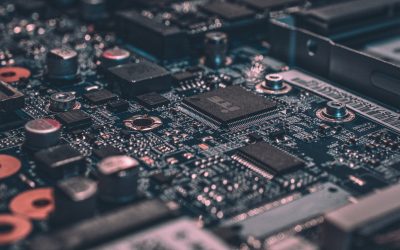The dilemma of batch processing vs. real-time processing is becoming increasingly significant in today’s big data landscape. From a startup to an enterprise, every company is processing terabytes of data. Companies have an enormous amount of information at their disposal in the form of data.
For an organization, the pressing question is:
How can you best use all the data?
In this article, we will discuss batch processing vs. real-time processing. We also discuss how batch processing and real-time processing work, their advantages and disadvantages.
What is Data Processing?

Data processing is converting data into usable information. Adata scientist or a group of data scientists performs data processing.
The process starts with data in a raw format, converted into a readable form like a document or graph. In a readable format, it’s easier to analyze data with a computer and draw conclusions.
Stages of Data Processing
There are six stages of data processing:
- Data collection: the system collects raw data from data warehouses or data lakes.
- Pre-processing of data: the raw data is cleaned and organized.
- Data input: it’s the first face of usable information. Here the pre-processed data is converted into a machine-readable format.
- Data Processing: data is processed and manipulated using machine learning (ML) and artificial intelligence (AI) algorithms.
- Data Output: data in this stage is translated and readable by ordinary people (non-data scientists). The data output may be in the form of audio, video, graph, or a document.
- Data Storage: the final stage of data processing where the system stores data for future use. The data in this phase is easily accessible at any point.
What is Batch Processing?
Batch processing is a data processing system that processes data in large quantities. In batch processing, transactions are recorded and stored over a period. Data is collected, stored, processed, and the system produces results in a batch.
Hadoop works on batch processing of data in a system.
How Does Batch Processing Work?
In a batch processing system, transactions are accumulated and processed over a certain period.
Here, the system does not require unique hardware or system support for data entry. There are no batch fees or processing fees per batch basis.
When it comes to real-time data availability, or when you don’t need to run a quick analysis, you can use batch processing. It’s cheaper and more efficient than streaming revenue. A batch is the best way to go when you are dealing with high or low processing volumes.
Where Should I Use Batch Processing?
Batch processing is often more effective when no real-time analysis results are required, such as in a database or web application. Batch processing can be more effective if you don’t need fast analysis results.
Data is processed as individual parts in the system, and there is no waiting for the next batch or processing interval. Data is processed at a batch time but not simultaneously with the data in real-time.
The individual transactions are processed promptly to avoid delays in batch processing. You can process multiple datasets at once, and the company can act on the spot.
Example of Batch Processing
An example of batch processing is payroll or billing systems. Let’s take a look at how that works:
- The sales team collects data over a period.
- Raw data enters into a system (all at once).
- Data is processed and turns into useful information.
Some other examples of batch processing in real-world scenarios are:
- Transactions of credit card
- Bill generation
- Input/output processing in the OS (operating system)
Advantages and Disadvantages of Batch Processing?
| Advantages | Disadvantages |
| Ideal for processing a large amount of data | Takes a longer period |
| Budget-friendly | Requires a system that can handle a large amount of data |
| More structured and efficient | The delay between data collections and processing can be inconvenient |
| Allows for an adequate audit trail | Files are not always up to date |
What is Real-time Processing?
Real-time processing can be categorized as “real-time,” meaning it is done in one go and without any delays.
Real-time processing is fast and processed as soon as the transaction takes place. Once a transaction has taken place, the system processes it together with other transactions.
Platforms like Spark Streaming can get near-instant analytics results.
How Does Real-time Processing Work?
In real-time processing, the system processes transactions and enters the information immediately into the system. If a transaction occurs after a delay in accumulation, it is processed in real-time. If the transaction occurs before the delay, it is not processed.
The number of “real-time” processing nodes is defined by the nodes associated with the real-time data flow. In this way, the number and type of nodes in the data flow generate a “real-time processing” for each “real data stream.”
Examples of Real-time Processing
An example of real-time processing is operational intelligence (OI). It’s a data science philosophy focused on implementing quick business decisions.
A few more examples of real-time processing systems include:
- Radar systems
- Customer service systems
- Bank ATMs
Advantages and Disadvantages of Real-time Processing
| Advantages | Disadvantages |
| Ideal for processing a large amount of data | Requires a complicated and expensive system |
| Information is always up-to-date | Tedious to process |
| Insights are immediately available from the updated data. | Difficult for auditing |
| Fast real-time analysis |
Stream Processing: A Brief Introduction
Stream processing is analyzing streaming data (from one device to another) in an instant. While its data is streaming, the stream processing system runs computations without time limitations on the output.
In a stream processing system, you do not need to store large amounts of data. It is suitable for continuous data and adequate for systems and processes that rely on real-time data access. Stream processing advocates the immediate processing of data, i.e., the process is carried out in a single step and without latency.
Unlike the batch processing model that requires data collection over time, stream processing requires data to be fed into analysis tools. To combine lambda architecture with batch processing and real-time processing, we need a combination of lambda and SQOOP to manage real-time data.
An example of a good fit for stream processing is applications with diverse data, such as a database or web application.
Batch Processing Vs. Real-time Processing
Batch processing is a coherent way of processing data in an enterprise. This system requires separate programs for input, process, and output. Batch processing is an excellent way to go when you have a high volume of data.
On the other hand, real-time processing systems have continuous input, process, and output. Your organization might require a more complex and costly procedure.
Real-time processing is more profitable for businesses due to several reasons. It provides an organization with the opportunity to make decisions faster.
One minute can make a massive difference in the business world.
More and more companies are switching from batch processing to real-time systems to help business owners see what’s going on with their business at any point.
Conclusion

How you use data depends on whether you use batch processing or real-time processing. The decision here is not that difficult if you know what you want!
In a nutshell,
- If the process is complicated and you need the analysis results promptly (right when the data gets to you), you should use stream processing.
- If you need faster results, you should lean toward real-time processing. That’s when you need the answer within seconds.
- Batch processing is suitable when you have a large volume of data and do not need to make split-second decisions.
Real-time processing leads to faster results; it is preferable to process data in real-time whenever possible. Still, it includes additional overhead and is not always ideal for all applications.
It all comes down to your organization’s preference and the unique needs of your business in the end!




0 Comments